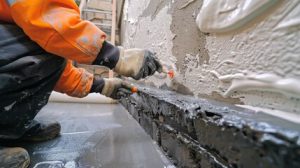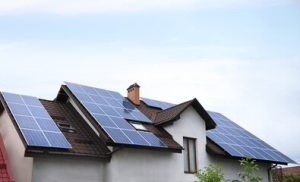The demand for cleaning services has been steadily growing. Cleaners are now seen as key players in everyday spaces. Their role is no longer just about dusting and mopping floors. They shape environments that influence comfort, productivity, and health.

Cleaner Near Me today work in far more diverse contexts than before. They handle offices, homes, and even public facilities that demand a higher level of sanitation. Modern cleaning is about science and strategy more than just labor. Each task is designed to protect both people and property.
A professional cleaner is expected to understand hygiene standards deeply. This includes knowledge of which materials respond best to certain cleaning agents. It also includes knowing the safe handling of chemicals and tools. This expertise ensures that cleaning is effective and also safe for everyone involved.
The public now expects cleaners to adapt to environmental standards. Eco-friendly cleaning products have replaced many of the harsh chemicals used in the past. The goal is to sanitize spaces without harming nature. This trend has made cleaners both environmental stewards and health protectors.
There is also a growing link between cleaning and psychology. People who live or work in well-maintained areas often feel calmer and more motivated. A cleaner’s work indirectly shapes emotions and behaviors. A tidy space gives a sense of order and control that many find essential.
The industry has shifted towards more technology-driven tools. Robots and automated machines now assist cleaners in large-scale spaces. This reduces physical strain while improving efficiency. Still, the human touch remains irreplaceable when it comes to detail and judgment.
Professional cleaners are also undergoing formal training. These training programs cover not only cleaning techniques but also soft skills. Cleaners must know how to interact with clients respectfully. They need to manage expectations while maintaining confidentiality.
Health protocols are stricter now, especially after global health crises. Cleaners are trained to focus on high-touch surfaces. Door handles, switches, and shared equipment are disinfected multiple times a day. This helps reduce the spread of illness in shared environments.
Modern cleaning also emphasizes preventive strategies. Cleaners do not only react to dirt but plan ahead to prevent buildup. Scheduled deep-cleaning reduces the long-term cost of maintenance. Clients appreciate this proactive approach because it saves them both time and money.
The flexibility of cleaning services has widened. Clients can now request custom plans that match their schedules. Cleaners may arrive late at night for offices or early morning for homes. The industry has adapted to ensure convenience and privacy.
In homes, cleaners provide more than surface cleaning. They may assist with laundry, organizing, and even seasonal preparations. This makes their work highly personal. Many households rely on cleaners as an essential part of family life.
In commercial spaces, cleaners protect brand reputation. No client wants to walk into a dusty office or a cluttered reception area. Cleaners ensure that first impressions remain positive. They silently contribute to the professional image of every workplace.
For industries like healthcare and food, the role of cleaners becomes even more critical. Sterile environments are a matter of safety and compliance. Cleaners here must follow strict standards that align with health regulations. Their precision is often life-saving.
Green cleaning continues to evolve. Plant-based disinfectants and reusable tools are gaining ground. Some cleaners specialize only in eco-friendly services. Clients who care about sustainability are willing to pay more for this expertise.
There is also an emphasis on digital booking and communication. Cleaners are now reachable through apps and online platforms. Clients can schedule services, give feedback, and track progress digitally. This has modernized an industry once seen as traditional.
The pandemic highlighted the hidden value of cleaners. Suddenly, sanitation became the first line of defense against infection. Cleaners were among the silent frontliners who kept spaces safe. Their work gained newfound respect and recognition.
With this recognition comes higher professional standards. Certification programs now allow cleaners to prove their skills. Certified cleaners are often more trusted by clients. This elevates cleaning into a recognized profession rather than just a side job.
Another modern aspect is specialization. Some cleaners focus only on windows, carpets, or industrial machines. Others handle biohazard cleaning, a demanding task that requires strict safety measures. This specialization gives clients confidence in receiving expert service.
The cost of cleaning services varies, but many see it as an investment. A cleaner environment reduces maintenance issues, prevents damage, and even improves employee attendance. These indirect benefits often outweigh the expense.
Technology also improves accountability in cleaning services. GPS check-ins and digital reports confirm that tasks are completed. Clients no longer need to guess about the quality of service. They receive transparent proof of work.
Cultural respect is also part of the cleaning profession. Cleaners are entering diverse households and workplaces. They must adapt to cultural preferences in terms of space and privacy. This sensitivity makes them more trusted and valued.
Cleaners also manage hazardous waste in certain industries. They ensure proper disposal that complies with environmental laws. Without their expertise, workplaces would face legal and health risks. Their unseen efforts prevent larger problems from arising.
The relationship between cleaners and clients is built on trust. Cleaners often enter private homes or sensitive business areas. Clients must feel safe leaving their belongings around them. Professionalism and honesty are essential for long-term service.
There is also a physical demand in cleaning that is often overlooked. Cleaners work long hours, sometimes lifting heavy objects. This requires endurance and resilience. It is a job that blends both skill and strength.
Innovation continues to redefine cleaning techniques. Steam cleaning, ozone treatments, and UV sanitation are becoming mainstream. These methods kill germs without harsh chemicals. Cleaners must stay updated to meet the rising expectations of clients.
The industry is also becoming more inclusive. People of different ages, genders, and backgrounds are joining the workforce. What matters most is reliability and skill. This diversity strengthens the profession as a whole.
As living spaces shrink in modern cities, cleaners adapt to smaller and more compact homes. They develop strategies to maximize cleanliness in limited areas. This requires both creativity and precision.
In workplaces shifting to hybrid models, cleaning services adapt too. Offices used less frequently still need consistent sanitation. Cleaners help balance these changing schedules by offering flexible visits. This adaptability ensures relevance in a fast-changing world.
The wellness movement has also influenced cleaning. Many clients link cleanliness with mental health. A clutter-free and sanitized space reduces stress. Cleaners, unknowingly, contribute to this wellness culture.
Client expectations have grown sharper. They no longer want only clean surfaces but also pleasant scents and safe air quality. Cleaners use air purifiers and odor-neutralizing products to enhance overall ambiance. This sensory approach makes cleaning more holistic.
Digital reviews also affect the industry. Clients share feedback online that can boost or damage reputation. Cleaners are motivated to maintain consistency. Their service is no longer just judged privately but visible to the wider public.
Community cleaning projects are becoming popular. Cleaners collaborate with neighborhoods to maintain shared spaces. This creates a sense of collective responsibility. It highlights the cleaner’s role beyond paid services.
Cleaners are also essential in events. Concerts, weddings, and gatherings rely on them for both preparation and post-cleanup. Without them, large events would be disorganized. Their invisible effort keeps everything smooth.
There is also the matter of emergency cleaning. Floods, fires, or sudden damages require urgent intervention. Cleaners trained in restoration bring back order quickly. Their role becomes critical during crises.
Another trend is subscription-based cleaning. Clients commit to regular schedules at discounted rates. This ensures loyalty for cleaners and consistent results for clients. It transforms cleaning into a planned lifestyle choice.
Many cleaners also integrate organizing services. Beyond dusting and wiping, they help declutter spaces. This blend of cleaning and organizing appeals to clients overwhelmed by clutter. It adds a psychological benefit to the physical cleaning.
As technology grows, so does the role of digital tools in training. Cleaners can now access online courses to improve skills. Virtual simulations even teach them how to handle different scenarios. This makes training more accessible and modern.
Mobile payments have also simplified the industry. Clients can pay instantly without cash. Cleaners gain more convenience and safety. It reduces barriers between service and transaction.
In rural or less developed areas, cleaners face unique challenges. They often work with limited resources but still provide effective results. Their creativity in making the most of available tools shows adaptability. This reinforces the universal need for their service.
Cleaners also participate in sustainability by reducing water use. They adopt methods that save resources while ensuring cleanliness. This environmental consciousness resonates strongly with modern values.
The job also requires emotional intelligence. Cleaners sometimes work in sensitive environments like grieving families or stressful offices. They must manage their presence quietly while doing their tasks. Respect and empathy become part of their service.
The cleaning industry is expanding globally but remains deeply personal. Every cleaner interacts closely with individuals and families. Their work is both practical and intimate. They improve daily life in ways that are often unnoticed.
As society grows more complex, the demand for reliable cleaners will keep increasing. Their responsibilities evolve with every new trend, from technology to psychology. What remains unchanged is their role in keeping spaces livable. Cleaners continue to be the quiet guardians of hygiene and comfort.
The future of cleaning services will likely merge human skill with advanced technology. Automation will handle repetitive tasks while humans focus on precision. This partnership ensures efficiency without losing the personal care that clients value.
Professional cleaners are no longer background workers. They are essential contributors to modern lifestyles. Their work defines the quality of spaces people occupy. Cleaners stand as silent yet powerful forces in shaping a healthier and more organized world.






